The Man Who Allows You to See
French ultra runner Sébastien Chaigneau retired from racing in the professional division but he is still running up front during big events such as UTMB – but now with a video camera to let all of us see the action up close. That requires superb fitness and the 48 year old Chaigneau knows that he can't slow down much. We chatted with him about his training, his racing career and the thrill of chasing athletes such as Pau Capell, Xavier Thévenard, Zach Miller and Kilian Jornet up and down mountains on narrow goat trails with a camera in hand.
Slowtwitch: Thank you so much for your time.
Sébastien Chaigneau: Hello Herbert and thank you so much.
ST: With no big events on the horizon because of COVID-19, what are you up to these days?
Sébastien: Yes, there are no events at the moment, but I like to keep going to the mountains for all the mountains have to offer. Like animals, flowers and the sensation of feeling alive. This playground is totally amazing and allows you to see new landscapes every day. I will still wear a bib at the end of August because I am the sponsor of the Echappée Belle. This ultra-trail running race crosses the Belledonne mountain range (Southeastern France) at the end of August and it is a 145km distance event with 11400m of elevation gain.
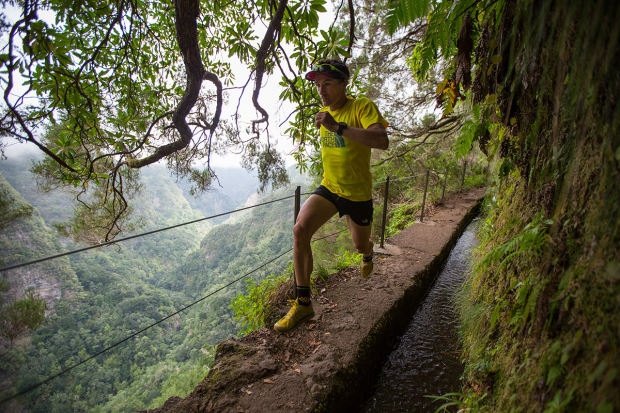
ST: How many folks do you expect in that event and what precautions are being taken?
Sébastien: There are 500 runners in both races with 87 kilometer and 62 kilometer run options. In these events wearing a mask is mandatory at the start and finish and also at the aid stations. There are waves of 100 people departing every 30 minutes and everything is designed to limit contact between the runners, the public and the volunteers who are very often elderly.
ST: I believe you finished twice on the podium at the coveted Ultra Trail Du Mont-Blanc event in 2009 and 2011. Where do these finishes rank among all the events you have competed in?
Sébastien: Those were very special moments in my career for me because I was able to see the evolution of the event having taken part in the first edition in 2003 on the short course and having started in it 12 times. What is interesting is this connection that is made with the public and that binds and grows as the race progresses. Indeed, as we go along, we feel that there is an energy that rises and explodes during this final stretch with all these people who want to be there and live in this moment, even if just by proxy.
ST: You won the Hardrock 100k in Colorado in 2013. Was that the only ultra-distance event in the USA that had caught your attention?
Sébastien: When I looked at the races that appealed the most to me in the US, I found this event to be the most beautiful and the most representative of this sport and this country. Racing in Colorado was incredible for me and I felt fortunate to be among the 140 people at the start. What I liked the most about America were the interactions with the local people. The welcome is exceptional, friendly, on a human scale, far from these big mass races which are multiplying in Europe. As for the course, it is incredibly vast and you feel very small in these large spaces. In this amazing place you also are aware that you are part of the food chain, bear, puma, elk and I loved it. Also a few weeks before the event I received a message from Scott Jureck offering me his support as a pacer. What else, we did 80 kilometers together and had an incredible time. A lot of great memories.
ST: Have you been back to the USA since and have you done any other big races here?
Sébastien: No unfortunately I would have liked to come and try other races like the Western States or go do the Nolan's 14 Ultra. I only came back for The North Face in San Francisco as well as Sedona for athlete summits.
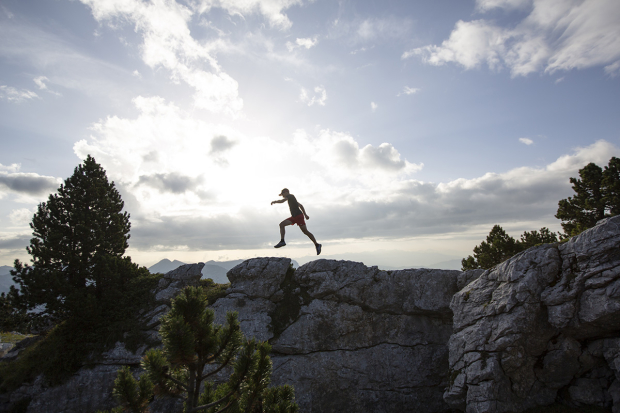
ST: Looking back at all the runs you have done, and they do not necessarily need to be races, which ones do you remember most fondly, and can you explain why?
Sébastien: I think that every race with or without a win has a sentimental side and has an emotional part that leaves more or less indelible traces. I have been fortunate to participate in many competitions across the world. It is discoveries of cultures and landscapes that make trail running so rich. I think there was an incredible moment in the Libyan desert during the Lybian Challenge in 2009. I was at km 97 in the Libyan Desert between 2 checkpoints, and there was Tuareg out of nowhere. No doubt he was hunting for his family. He exchanged a few words with me and prepared me an exceptionally delicious mint tea, with two pieces of wood taken out of his bag. A moment in time and totally amazing, but so beautiful.
ST: The last couple years you have worked at the UTMB events behind the camera. How did that get started and how long have you been doing this now?
Sébastien: I started behind the camera a little while ago, although I was making small films with the GoPro, but nothing live. My wife has an audiovisual production company, and her company Mouss Films produces live events of trails and ultra-trails like the UTMB since 2012 or the Mont Blanc Marathon. It was only natural that I became involved in this environment and somewhat naturally I found myself behind the camera. They [UTMB] were asked to be more and more in contact with the race leader and in order not to inconvenience the runners and to be as environmentally friendly as possible, it was necessary to call on athletes to follow the race leader. I know the etiquette and the images that need to be captured. I also know what people expect and like to see such as the landscapes, the environment, but also the moments of the race with the first moments of battle between two runners. And I also know how to make myself forget that I am the only witness of the action which takes place before my eyes, or rather in front of my camera. In addition to all this I have to keep in shape because despite the fatigue the race leader advances and very quickly for certain events like OCC, CCC or TDS.
ST: I think most of the pros know you, but are there some who are maybe a bit surprised about the camera guy running easily along with them?
Sébastian: Yes, it is true that from time to time there are surprises in the eyes, often in those of Asian runners who know me less. But many recognize me and when you are running in an ultra-trail you are alone, alone facing your feelings, your ups and downs, and diverse conditions. There the runners find themselves with company. Many will tell you that there are people at the various aid stations, but you are just passing through and the contact time is very short and in the flow of the race. So for some I become a pacer, a companion, a confidant.
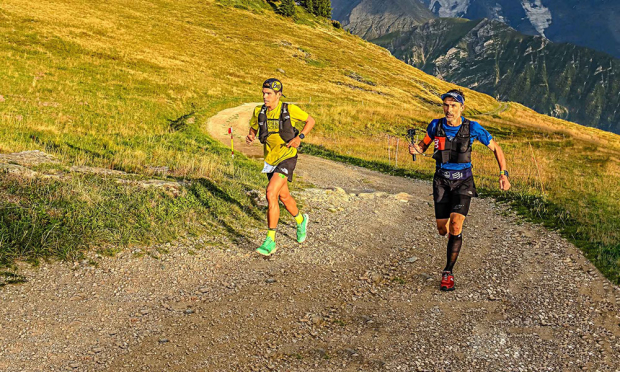
ST: How much gear do you actually carry when you chase the front of the race?
Sébastian: The first few years were difficult because the equipment was not necessarily suitable for running with it. Especially the backpack with the transmission systems weighed almost 4.6 kilograms and was not very comfortable. Luckily I was able to count on my sponsor Compressport to develop a specific bag. I went back to their research and development department and they ended up creating a product totally adapted to my requests. Now our overall package weighs 1.6 kilos and this allows me and the team to follow the runners more easily and not have to deal with bruising and back aches, and thus we are able to do the various shoots of the week of the UTMB.
ST: During the UTMB week how many kilometers do you run, and do you have to taper for it like with a race?
Sébastien: I believe that last year I did almost 130 kilometers and a lot of elevation changes. I have to stay in shape and sharp to not get dropped by the competitors who are in their best shape. The preparation is about the same as for a competition but with a different stress, because you cannot let go of the ones you have to follow. While in a race you can adjust your pace and push harder later.
ST: What is actually your day job?
Sébastien: I in fact have the same job as before, when I was doing more traveling and competing. I get up very early in the morning around 5 a.m. and start my training session around 6 a.m. I then come back between 8 a.m. and 12 p.m. then I take a little nap and then I work on the programming of the ultra-trail training and nutrition coaching. I share what I know while continuing to prepare myself for a few races in the year and to be ready for shoots that we may have to do. At the same time it allows me to spend more family time and less on planes and that's pretty good these days.
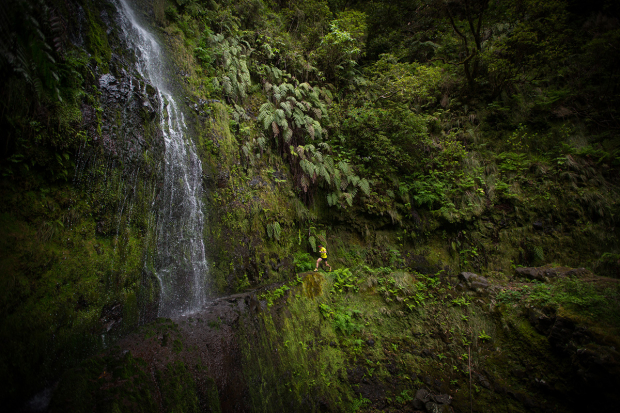
ST: What is on your bucket list these days and once things return to somewhat normal? Are there any events you have always wanted to do but somehow could not schedule in or get to?
Sébastien: There are so many races now around the world, and thus in the last months of a year I schedule no races and I look for out for unique invitations. No goals just the drive to discover a new event, a new culture, different people and I try to immerse myself in these new encounters. It refreshes and motivates me to go on to new seasons and new adventures.
ST: Talk about training. How much do you do on a weekly basis now and how different is it now compared to when you raced professionally?
Sébastien: I run differently now and I have accepted not to be in the front anymore. It is easy to say but not so easy to do. I think that even though I am not as competitive anymore I try to be ready for the events that I am entering, otherwise I will suffer and I do not wish to suffer. Now if I prepare myself and the race does not happen then it is not so serious since I still enjoyed the preparation for it, and it is just a new experience and that lets me reflect on the runners I follow.
ST: What is your weekly mileage now and how does it compared when you raced heavily?
Sébastien: It's a little different because I wasn't doing a lot more kilometers but faster and more technical training. Now I still do a lot of kilometers, not as much, but I spend time in the mountains with friends and in a way that I couldn't have before. But it's also good because I have to stay fit to capture the images and continue to work with Isabel and Mouss Production on these events. The competitors get faster and faster and I'm getting older.
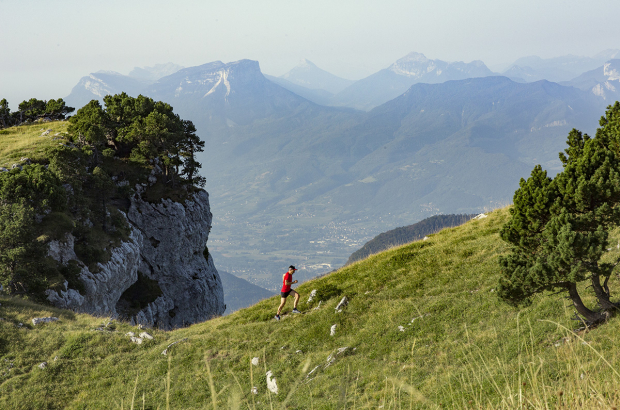
ST: What about other interests and hobbies?
Sebastien: I already spend a lot of time between training and the various related activities, but I also take care of our children and maintain the garden. We grow vegetables which we then cook as a family. Our children also do a lot of activities and we are also active in the community where we live.
ST: Could you also talk about your diet?
Sebastien: In terms of food I have been training for a year and a half focused on food, food quality and how to eat properly while protecting the environment. This is a subject that has always interested me and is not easy topic to discuss. I follow a few people in nutrition but what is important in nutrition is to consider the subject in its entirety because the problem today is that people who have eating disorders, overweight problems etc. must make long-term changes. For many the slightest change is hard and the constraints complicated to follow over time. Many follow a diet for a while and gradually let it go. It is a shame though because you are what you eat.
ST: Is there anything else we should know?
Sebastien: Above all, there is still a lot to learn and a whole life is not enough.
Below is a clip from the 2018 UTMB battle between Zach Miller and Xavier Thévenard and camera man Sébastin Chaigneau. Thévenard won the race that day, and Chaigneau won admiration for his work.
Image 3 © Pascal Tournaire
Images 1, 2, 4, 5 © Etienne Valentin/Mouss production



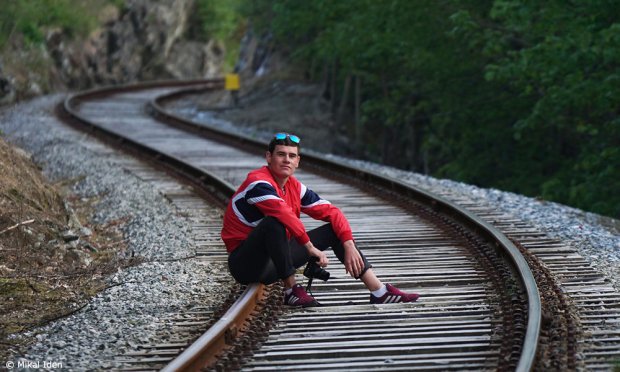
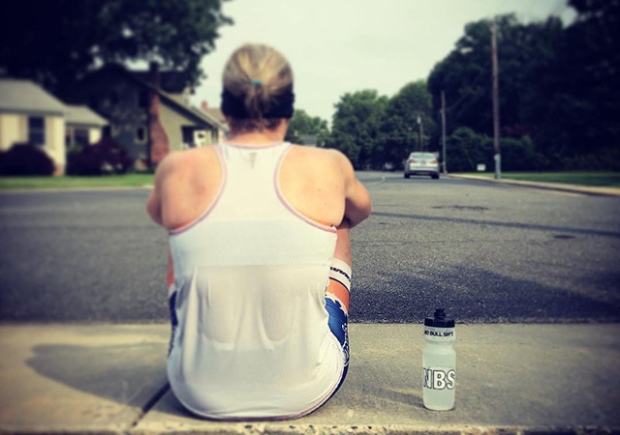
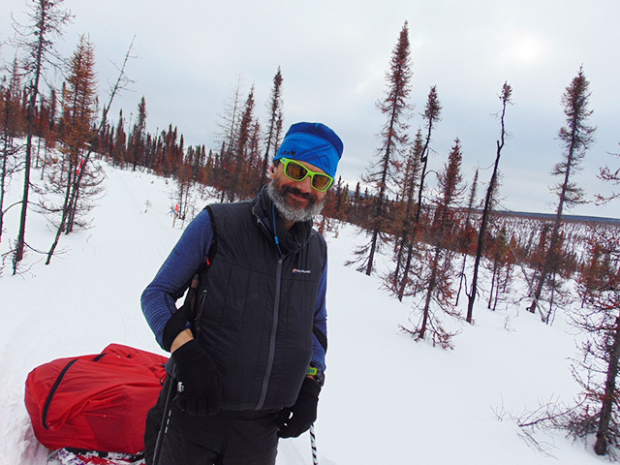

Start the discussion at forum.slowtwitch.com